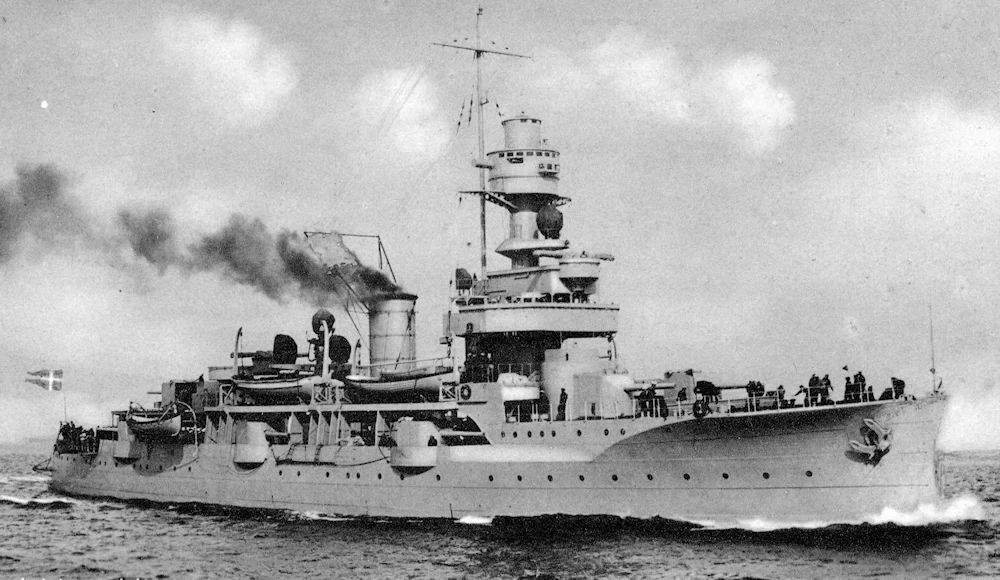The Danish training cruiser Niels Juel was one of Denmark’s most significant naval vessels during the interwar period and the early years of the Second World War. Named after the seventeenth-century Danish admiral Niels Juel, the ship embodied both the maritime heritage and the modernization of Denmark’s small but professional navy. Her story, especially during the German occupation of Denmark, reflects the difficult position of a neutral nation caught between larger powers.
Construction and Role in the Danish Navy
Laid down in 1914 at the naval dockyard in Copenhagen, Niels Juel was not completed until 1923 due to material shortages and the disruption caused by the First World War. By the time of her commissioning, her original design as a coastal defense ship had become somewhat outdated. However, she was modified into a training cruiser, intended to serve both as a cadet training platform and a symbol of Danish sovereignty.
Displacing around 3,800 tons, Niels Juel was armed with ten 150 mm guns arranged in turrets and casemates, as well as smaller anti-aircraft weapons. Her maximum speed of approximately sixteen knots reflected her defensive purpose rather than offensive ambition. Throughout the 1920s and 1930s, she conducted goodwill visits and training cruises, helping Danish naval cadets gain experience while maintaining Denmark’s maritime presence in the Baltic and North Sea.
The German Occupation and the Attempted Escape
When Germany invaded Denmark on 9 April 1940, the Danish government capitulated within hours to avoid destruction. Niels Juel was in service at that time but remained under Danish command during the uneasy occupation. By late summer 1943, tensions between Denmark and the occupying forces had escalated sharply. The Germans planned to seize the remaining Danish fleet to prevent it from escaping to Sweden or joining the Allies. On 29 August 1943, as German forces moved to capture Danish naval bases, the Danish Navy received secret orders to scuttle its ships or attempt escape to neutral waters.
Niels Juel, then anchored in the Isefjord near Holbæk, attempted to flee northward toward Sweden. Her captain, Commander Carl Westermann, hoped to reach open water before German aircraft could intervene. However, German bombers soon attacked, strafing the ship and damaging her control systems. Realizing escape was impossible, Westermann ordered the ship to run aground near Nykøbing Sjælland. The crew opened sea valves and set demolition charges to prevent capture. Though the ship partially flooded, she did not completely sink, allowing German forces to board her soon after.
German Use and Final Fate
After her capture, the Germans refloated and repaired Niels Juel. Renamed Nordland, she served as a training and accommodation ship for the Kriegsmarine. Her engines were never fully restored, limiting her to stationary service in Danish waters. She remained in this role until the final months of the war.
In May 1945, following Germany’s surrender, the ship was found abandoned and heavily damaged. The Danish Navy later salvaged her, but she was considered beyond economical repair. She was finally broken up for scrap in 1952.























